stroke
Latest
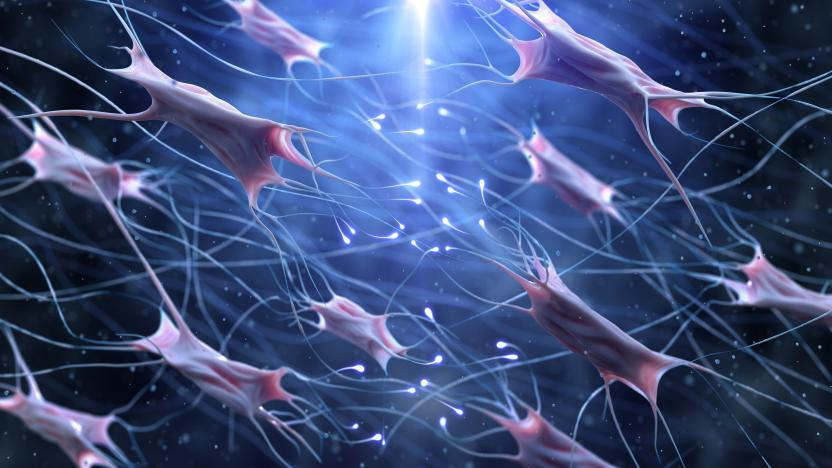
Hitting the Books: How 'universal' stem cells might fix our brains
The technique of iPS cell reprogramming takes a differentiated cell backward in development.

MIT’s thread-like robot can slip through blood vessels in your brain
MIT engineers created a thread-like robot that can glide through the brain's blood vessels and could deliver clot-reducing drugs to treat strokes or aneurysms. The robotic thread could offer an alternative to open brain surgery, and it could be controlled by surgeons outside of the operating room. Theoretically, surgeons could control it remotely from an entirely different location.
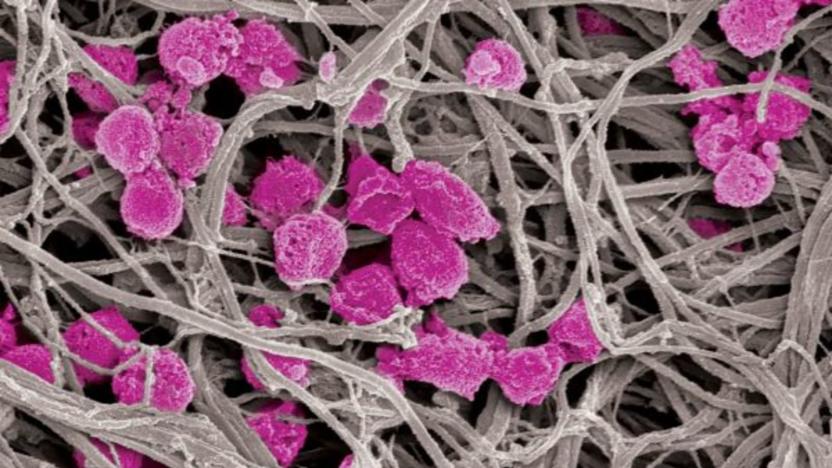
Scientists design 'decoy platelets' that reduce risk of blood clots
Heart disease, stroke, sepsis and cancer are incredibly serious conditions which together cause the greatest number of deaths around the world. They're unique illnesses, but they have something in common -- they're all associated with activated platelets, which play an important role in healing, but for some can also contribute to dangerous blood clots and tumors. Now, scientists think they've found a way to mitigate the risks associated with these platelets, thereby "outsmarting" the catalyst for these diseases.
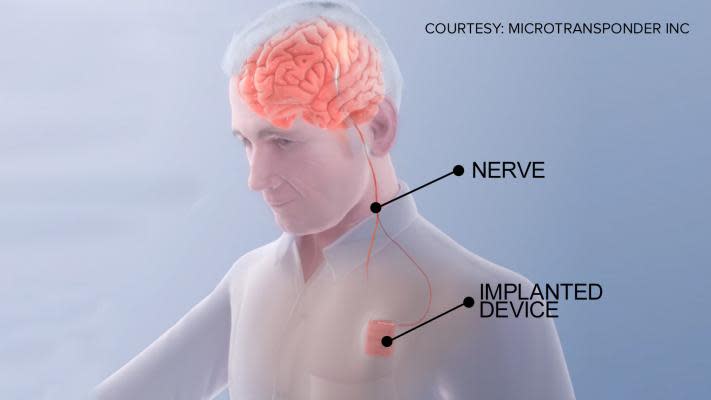
‘Brain pacemaker’ could help stroke patients recover quicker
Vagus nerve stimulation (VNS) may play a beneficial role in the motor recovery of stroke patients, new clinical trials at The Ohio State University Wexner Medical Center have revealed. As part of the therapy, stroke rehab specialists surgically implant the MicroTransponder Vivistim -- an electrical device that stimulates the vagus nerve -- into the patient's chest wall. It works via a wireless transmitter, which picks up signals, redirects them to the vagus nerve (located in the neck) and stimulates the brain whenever a therapist pushes a button.
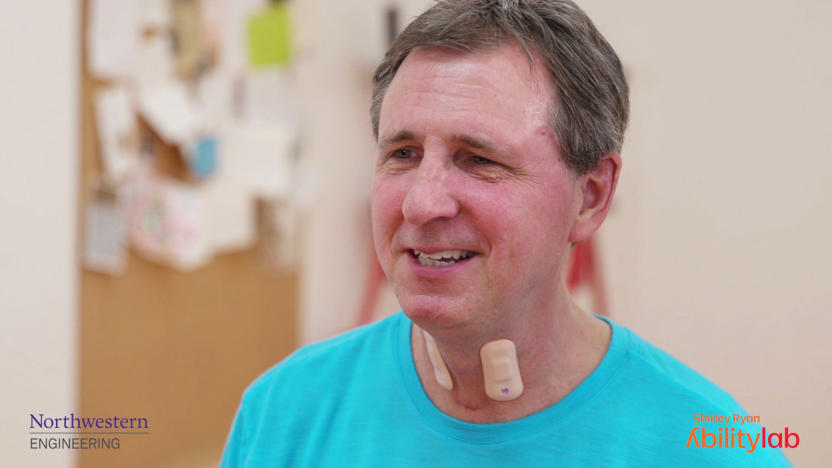
Throat sensor helps you recover from a stroke
Your abilities to speak and swallow are frequently signs of how well you're coping after a stroke, but measuring that is difficult. Microphones frequently can't distinguish between the patient and ambient sounds, and there's the not-so-small problem of making sensors that can hold up to the rigors of life outside of the hospital. Northwestern University may have a better way: its scientists have designed a wearable throat sensor that help diagnose and treat aphasia, a communication disorder typically associated with strokes. The wireless device tracks the vibration of your vocal cords to gauge your recovery and determine whether or not doctors need to intervene.
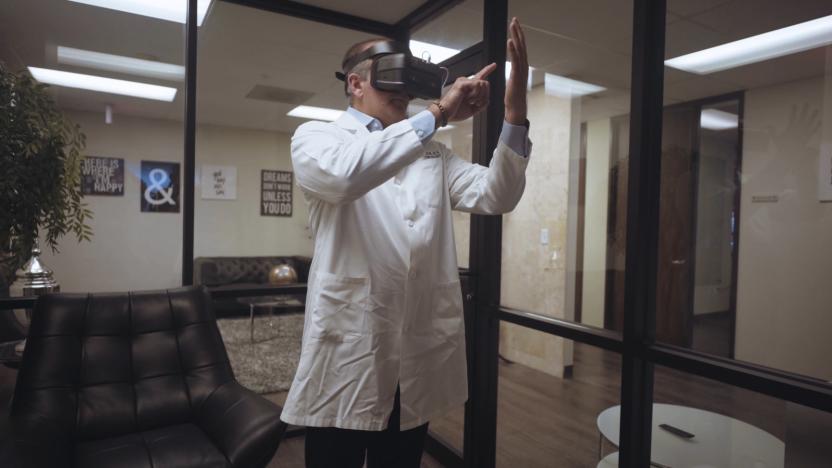
Qualcomm tries to find a place for VR in medical training
It's the "Wild West" age for virtual reality. The medium has gained traction as a canvas for storytelling and gaming, but hasn't yet been applied in many other fields. As the industry explores ways to use VR effectively, Qualcomm wants to make sure its Snapdragon VR platform helps shape that conversation. The company recently unveiled a VR medical training demo that it created with Dallas-based content publisher Forward XP and an advising physician to teach users how to tell when someone is suffering a stroke, using the popular F.A.S.T method.

Mind-controlled bionic hand can help stroke patients move again
A team of scientists from the Washington University School of Medicine in St. Louis have proven that the mind-controlled device they developed can help stroke survivors regain control of their hands. Stroke typically causes paralysis on one side of the body, leaving patients nearly or completely unable to move some of their limbs. They can regain some voluntary movements after years of therapy, but the team's device called Ipsihand could help make their rehabilitation go faster. For their study, the researchers asked 13 people who had a stroke six months or more in the past to wear the bionic hand and a cap with electrodes on their head.
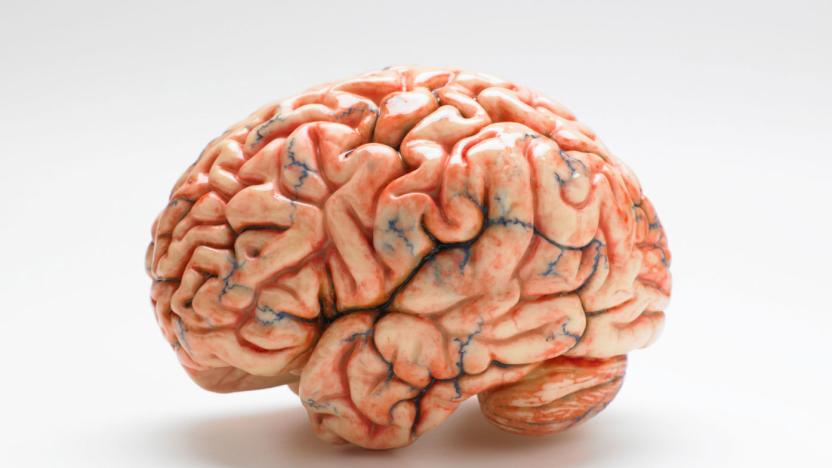
Researchers discover blood vessels in lab-grown mini-brains
Growing brains in laboratories was just the start for scientists. Next up is vasculature. By studying the naturally occurring capillaries discovered on the mini-brains, researchers from Brown University say that they will be able to conduct bigger investigations into things like strokes and concussions.
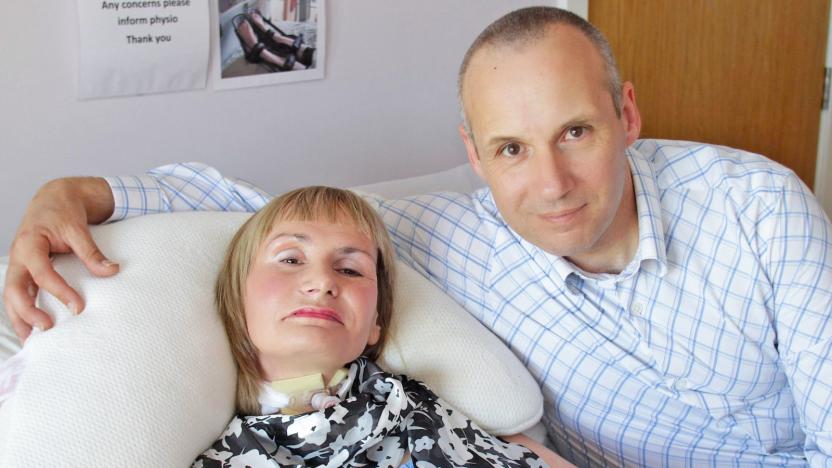
New brain-computer interface breaks through locked-in syndrome
Researchers have been using brain-computer interfaces to interact with patients suffering from locked-in syndrome for a few years now. But a new system from the Wyss Center for Bio and Neuroengineering in Switzerland may finally allow even the most immobile patients communicate with the outside world.
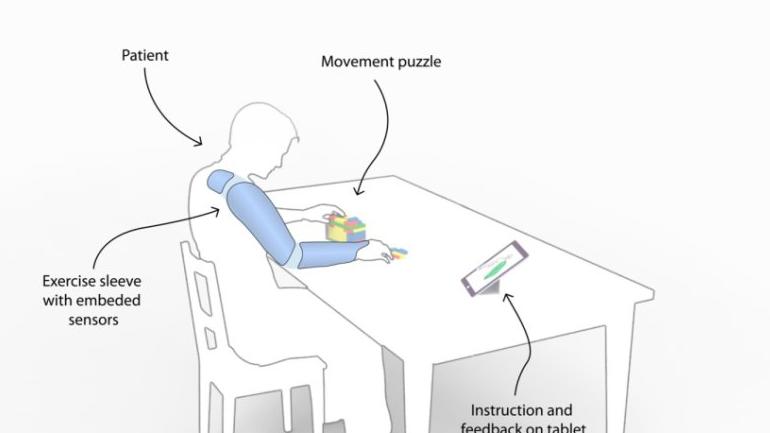
Wearable sleeve could improve stroke recovery therapy
When it comes to tools that help stroke victims on their way to recovery, we've seen exoskeletons of sorts to medicine covered clot-busting nanoparticles. But researchers from the University of South Hampton and Imperial College London have something altogether different cooked up: a wireless sleeve that gathers information of how a patient's muscles react during home therapy. As the school tells it, this sleeve, dubbed M-Mark, is the first to bring mechanomyogrpahy sensors (essentially ultra-sensitive microphones that measure muscle contraction) together with tri-axial accelerometers, gyroscopes and magnetometers.

Medicine-covered nanoparticles could help stroke victims
Doctors have been working for years on using tiny nanoparticles covered in clot busting drugs to clear blocked vessels in stroke victims. The only problem is that when a vessel is completely blocked, a lack of blood flow in the affected area is a problem. Strokes can be treated by inserting a stent into the clot, then opening it to pull the clot out but it can cause damage to the artery or dislodge pieces of the clot that get stuck elsewhere. Scientists at Harvard and UMass have struck on a method for using a stent to burrow a small hole through the clot, then releasing the nanoparticles into it. The increased pressure in the channel activates the drugs, which attach to the clot, break it up and continue to work on busting it up even as parts break off -- check after the break for a quick video showing the process in action.

Samsung engineers are working on wearable for early stroke detection
Samsung has quite the diverse family of products, and for the last two years, a team of engineers have been working on yet another. Folks from its smartphone and washing machine teams are building a wearable sensor that monitors brainwaves to detect the early stages of a stroke. The result is a prototype known as the Early Detection Sensor and Algorithm Package (EDSAP): a device that keeps tabs on the electric impulses of the brain with the help of a smartphone or tablet. In theory, the sensor-packed headset will alert folks who are at risk for a stroke early on, so they can get to a doctor to prevent potentially serious and permanent effects. The EDSAP's tech collects brainwave info and beams it wirelessly to the companion device, determining the chances of a stroke within 60 seconds. What's more, when used for longer sessions, the setup can analyze neurological health in terms of stress, anxiety and sleep patterns.

ATLAS bimanual-rehabilitation glove system hands-on (video)
The Squid Shirt that we checked out earlier today at Northeastern University certainly has the potential for healthcare use beyond straight off-season workout sessions, but the ATLAS project is an even purer expression of that application. The name is an acronym for the rather unwieldy Angle Tracking and Location At home System. In short, the system is a bimanual-rehabilitation glove system, a tracking device that utilizes two gloves to monitor the hand movements of stroke victims. The "Home System," part of the name, meanwhile, signifies its creators' intention to eventually release the ATLAS as an at-home testing system, allowing users to get more regular readings than industrial versions. The system is comprised of two standard black gloves -- the first version (it's currently on version three), assistant academic specialist Mark Sivak tells us, was comprised of gold lycra gloves. The gloves have bend sensors in each finger and internal measurement sensors on the back of the hand. The bend sensors are anchored on the back of the hand, located beneath a moveable flap. They're embedded in the glove, running down each finger. The hand orientation inertial sensor is comprised of an accelerometer, gyroscope and magnetometer located on a box strapped to the top of the glove. The bend sensors feed straight into a box with an Arduino Mega inside, while the inertial sensors first pass through their own Arduino microcontrollers before rejoining the data feed back to the PC.%Gallery-158061%

Newcastle University neuroscientists use video game for stroke rehab
Video games aren't neuroscience, unless they're helping stroke victims recover physical function in a scientific, medical capacity: then they're totally neuroscience. The above video shows off Circus Challenge, an action game from Newcastle University and Limbs Alive Ltd designed to help stroke patients regain motor control of their weakened hands and arms.Circus Challenge uses "next-gen" motion controllers – not the Wii, as other rehab systems have – to have patients fling pies at clowns, juggle, dive and perform other Big Top-inspired feats, with the difficulty progressing as motor skills improve. Newcastle received £1.5 million from the Health Innovation Challenge Fund for its project, and hopes to use the funds to provide remotely monitored, at-home therapy for stroke patients.Aside from all the philanthropy and innovation in the Circus Challenge project, we think the game design is pretty pretty as well. Check it out for yourself up top.

Neuroscientists develop game for stroke rehabilitation, give the Wii a run for its money
Think the Wii has the market cornered on gaming rehab? Think again -- neuroscientists at Newcastle University are developing a series of motion controlled video games to make stroke rehab more fun and accessible. The team's first title, dubbed Circus Challenge, lets patients digitally throw pies, tame lions and juggle to help them build strength and regain motor skills. As players progress, the game ratchets up its difficulty, presumably to match pace with their recovery. Although Limbs Alive, the game's publisher, has only described their motion controller as "next-generation," it affirms that the game will be playable on PCs, laptops and tablets later this year. In an effort to lower costs and provide at-home therapy, the team hopes to leverage a £1.5 million award from the UK's Health Innovation Challenge Fund to build a system that will allow therapists to monitor patient progress remotely. The whole enchilada still needs some time to bake, but you can hit the break for a video and the full press release.

FCC grants radio spectrum to muscle-stimulating wireless devices for paralysis patients
The medical community is all smiles today, because the FCC has decided to allocate a chunk of radio spectrum for potentially life-altering wireless devices. Designed for stroke patients and those suffering from brain or spinal cord injuries, these so-called medical micropower networks (MMN) use a set of implanted electrodes and a wearable wireless controller to stimulate the muscles of a paralyzed user. In a statement issued last week, the FCC announced that these devices have been approved for use within the 413 to 457MHz range, as requested in a petition from the Alfred Mann Foundation, which has already constructed several prototype MMN systems. The organization's CEO, David Hankin, immediately lauded the ruling, adding that the Foundation now plans to launch trials of MMN systems on humans, in the hopes of receiving clearance from the FDA. "The FCC's decision removes the most significant roadblock to helping people," Hankin said. "The frequency that has been approved for use is the most efficient for penetrating tissue with radio waves and without which the new generation of our implantable neurostimulator technology would be impossible to advance." The significance of the occasion wasn't lost on FCC chairman Julius Genachowski, either. "These broadband-enabled technologies are life-changing, impacting individuals, families, and communities in ways we can only begin to imagine," Genachowski said in a prepared statement. His sentiments were echoed in remarks from fellow commissioner Mignon Clyburn, who heralded the decision as "one of the most important the commission has adopted during my tenure," citing its potential to "greatly improve the lives of those who are faced with some of today's most difficult medical challenges."

External voice box prototype helps cancer, stroke sufferers regain speech
A team of UK scientists has developed a headset that can bring voices back to those who have lost their speech due to injury, cancer, stroke, and other maladies. They hope the prototype -- which uses magnets positioned in the user's mouth or tongue -- will take the place of low-tech solutions like throat valves, which have the tendency to get clogged. When he or she speaks, changes to the magnets' movements are detected by the device, which associates specific facial movements with corresponding words (the device currently has a vocabulary of about 50). The whole thing is still pretty clunky, as evidenced by the image at right, but the researchers are working on cramming the technology into a device roughly the size of a Bluetooth headset. They're also working on a way to implant magnets into the tongue of the wearer -- positioning the magnets in the wearer's mouth is proving to be one of the largest difficulties in implementing the technology.

MyVoice app for iOS and Android enables the mute to talk (video)
Talking is something most of us take for granted, but a new app called MyVoice -- currently available for iOS and coming soon to Android -- is attempting to give the ability back to those who aren't as fortunate. Developed by a group of University of Toronto students after being approached by a man who had a stroke, the location-based app allows users to "speak" pre-programmed text macros using text-to-speech. You can't add new phrases from within the app just yet, though for now there's an online portal that also allows relatives to configure strings and organize them into "places" for the ultimate user. We checked out the app and it seems to work as advertised -- there's a pretty extensive word pack that comes with it. You can score the free download at the more coverage link below, and we've got a video demo after the break.

LOPES rehab robot gets bodies moving -- no relation to JLo (video)
That's LOPES (Lower-extremity Powered ExoSkeleton) -- not Lopez -- and while this rehab robot can get otherwise disinclined parties to move their butts, it doesn't resort to monotonous dance beats to do so. Researchers at the Netherlands' University of Twente began work on LOPES in 2001 to assess motor skills and teach stroke victims how to walk again. Ten years later, LOPES -- which looks like Forrest Gump's leg braces on steroids -- now sports eight degrees of freedom and automatically adjusts to fit the specific support needed per patient. LOPES' overlords are working on a more compact and user friendly iteration, and expect a market-ready version to be available by mid-2012. In the meantime, LOPES has been enlisted in a larger EU project called Mindwalker, testing advanced control algorithms "to be used in autonomous exoskeletons." Video of the future real-life RoboCop after the jump. [Thanks, Mike]

NPR's iPhone app helps doctor recommend treatment for stroke patient
I have been a huge fan of NPR's News app [iTunes link] since it was initially released in August, and so seeing the following item was especially heartwarming. Right before Christmas, NPR published a story on how a Los Angeles doctor utilized the NPR app to obtain the information needed to get the right stroke treatment drug for his sister. Tanya Gill, a Chicago art instructor, collapsed while shopping, and word went out to her family members that she had been rushed to the hospital. Her brother, Dr. Joe Hastings, told his wife about his sister's illness, who commented that it sounded like a story she heard about stroke treatment on NPR. Hastings accessed the story on the NPR app and e-mailed it to the rest of the family. He then contacted the doctors treating Gill and urged them to utilize the drug, tPA, mentioned in the story. Gill has since made a complete recovery. While tPA is not a 'miracle drug' for stroke (it can only be used on a subset of patients, in a very narrow time window, and carries with it a substantial risk of severe bleeding), in this case it may have made a big difference. How has 'the internet in your pocket' changed how you interact with family members and health professionals when it comes to medical issues? Let us know in the comments.















